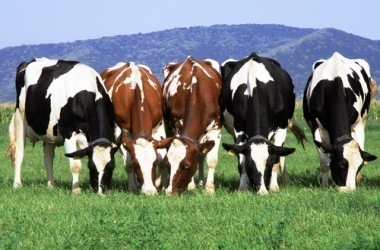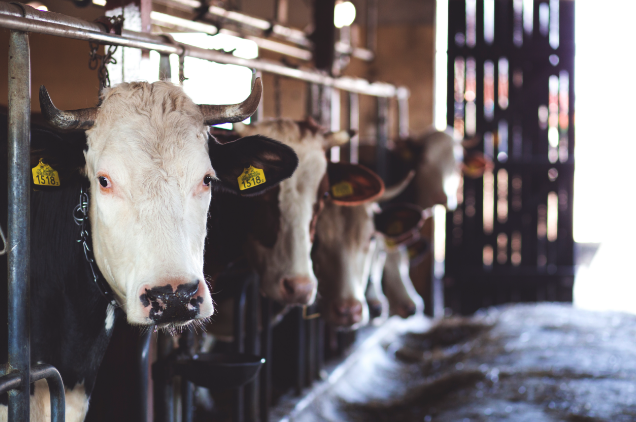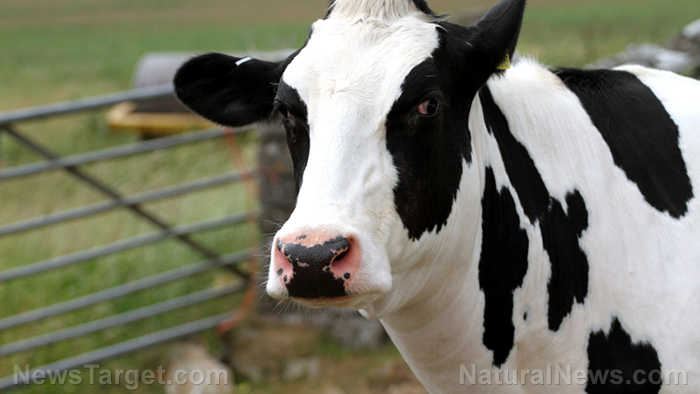
This way, an aggressive invasive species gets reduced, the cattle receive plenty of natural nutrition, human producers gain an economic incentive to preserve the remaining wetlands, and tens of millions of waterfowl can continue to use the Basin as a resting and feeding ground during their migration.
Today, the highly important Rainwater Basin is down to less than one percent of its original coverage. Most of it has been converted into cropland.
To make matters worse, the remaining wetlands are being overtaken by invasive reed canarygrass. A hardy, non-native perennial species, Phalaris arundinacea forces out native species of seed-producing plants that provide migratory birds with food for their long journey.
“It’s aggressive,” said John Guretzky, a grassland systems ecologist at the University of Nebraska-Lincoln (UNL). "Nothing stops its growth."
Guretzky sought out a way to preserve his home state's remaining wetlands from the dual threat of encroaching humans and invasive plant species. He decided to investigate if wetlands infested by reed canarygrass could serve as forage areas for livestock.
“We’re trying to encourage producers to graze or harvest the wetlands,” he explained. “That way producers could still get value through the land.”
A farmer could use wetlands as free sources of food for his own herd of cows, rent out the land to cattle farmers, or even harvest the reed canarygrass and sell it as cattle feed. (Related: A student has discovered that feeding cows microalgae increases the omega-3s in cheese.)
As the choking clumps of canarygrass are cut down by humans or eaten by livestock, the resulting open space can be recolonized by native plants, which in turn attract migrating waterfowl.
Wetlands can feed both cattle and migratory waterfowls
The UNL research team simulated grazing events on two wetland plots in Seward County, Nebraska by mowing down reed canarygrass in those areas for three years. They measured the amount of fodder during each harvest to see if wetlands could provide enough food and nutrients for livestock.
“Cattle producers are concerned about their cattle health,” explained Guretzky, who estimated that the wetland plots provided enough fodder to satisfy the concerns of cattle owners.
Furthermore, the research team observed the effect of repeated harvests on the native and invasive plant species found in wetland plots. They determined that more frequent grazing events gave local species a better chance to recolonize an area formerly dominated by reed canarygrass.
“Removing all that top growth lets more light in on the soil,” Guretzky said.
The tall stems and large leaves of reed canarygrass blot out sunlight and stifle smaller annual plants. Multiple grazing/harvesting/mowing events gave the native plants the room they needed.
However, the UNL researchers found that reed canarygrass was very resilient. Their mowing events only achieved minor reduction of the invasive species in one of the two plots over the course of three years.
“If you don’t maintain that grazing pressure, you won’t see a strong decline in the reed canarygrass," Guretzky warned. "We didn’t have quite the impact we expected to.”
According to the research team, the next step would be to use actual cows to graze the wetlands during the growing season. They believed the steady application of grazing pressure would achieve better success in cleaning out reed canarygrass from Rainwater Basin wetlands.
The results of the study were published in the Agronomy Journal.
To learn more about similar ecological developments, visit Ecology.news.
Sources include:
Please contact us for more information.























